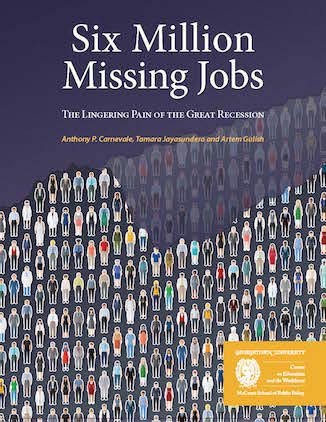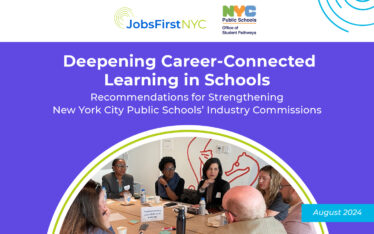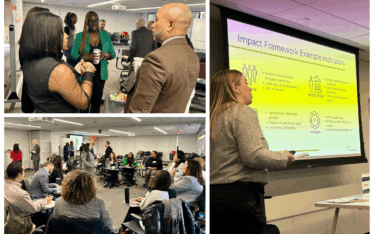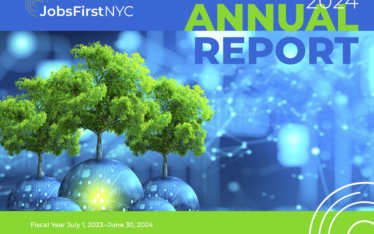In its 2015 report, Six Million Missing Jobs, the Georgetown University Center on Education and the Workforce examines the sustained impact of the 2008 Great Recession on today’s U.S. workforce. Among other findings, the report informs us that by 2020, 65% of all American jobs will require some form of post-secondary credential or degree. Last month, the Workforce Strategies Initiative at the Aspen Institute and the nonprofit community college network, Achieving the Dream, published a series of reports on the promise of community colleges for preparing both young and low-income adults for in-demand careers through alternative classroom techniques, increased financial aid opportunities, and targeted adult learning strategies. The data in these resources highlight both a unique opportunity and a significant need for workforce development providers, policymakers, advocates, and employers to more intentionally engage with post-secondary institutions, particularly community colleges, to effectively prepare the workforce of 2020 and beyond.
The City University of New York (CUNY) community college system plays a vital role in preparing young adults for in-demand careers. CUNY’s seven community colleges serve more than 99,000 students each year in its degree and non-degree programs, and they serve a much higher proportion of nonwhite, low-income, and first-generation college students than their four-year counterparts. Despite this promise, CUNY’s three-year completion rate is only 22% for community college students (and as low as 11% for students at Bronx Community College). There are several programs within the CUNY system aimed at increasing CUNY’s persistence and completion rates. These programs in turn decrease drop-out rates and stem the flow to the out-of-school, out-of-work population in New York City. For instance, CUNY’s Accelerated Study in Associated Programs (ASAP), which combines academic, financial, and social supports to improve graduation rates, is set to receive a $42 million expansion from 4,000 students to 25,000 students across all CUNY associate programs by 2018. Other CUNY programs and bridge programs designed to boost graduation rates include CUNY Discovery, College Now, CUNY Early College Initiative, CUNY START, and College Focus.
In addition to CUNY’s internal efforts to better equip students for graduation, nonprofit organizations throughout New York City play a crucial role in connecting young adults to post-secondary education options and helping them complete their degrees and certifications. One of JobsFirstNYC’s place-based workforce partnerships is the Bronx Opportunity Network (BON), a college access network of seven South Bronx CBOs that enables underprepared Bronx students to improve their academic skills, overcome personal barriers, and enroll in and complete college. The BON, now in its fifth year, uses a bridge structure to prepare students coming out of alternative high schools or high school equivalency programs for entry into two-year colleges. Moreover, it provides tutoring, coaching, and mentoring on-campus for students who enroll at Hostos or Bronx Community College. The BON also engages with both colleges to remove systemic barriers for students through institutional policy reforms such as successfully advocating for BON students to re-take placement tests after completing a summer bridge program.
In New York City, many of the living-wage positions in growing sectors such as Ambulatory Healthcare, Information Technology, Human/Social Services, and Financial Services require some form of post-secondary education. While we at JobsFirstNYC continue to advocate for multiple pathways to high-road careers, such as sectoral programming, apprenticeships and other non-college options, for individuals striving to get on track toward career success at family supporting wages, earning an associate’s degree can be a crucial step. The Bronx Opportunity Network, and other CUNY and CBO-based programs for underprepared and low-income students increase access and opportunity for successful completion for individuals who might otherwise struggle. Every year thousands of New York City community college students leave school without completing their degrees – through programs like the BON, we can intervene to increase college retention and completion rates.
Check back soon for more information on our work to strategically engage high schools, post-secondary institutions, and employers to decrease the number of out-of-school, out-of-work young adults in New York City.





